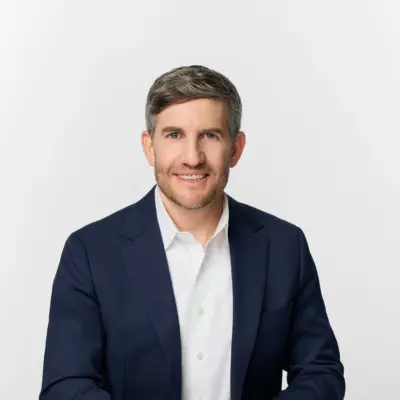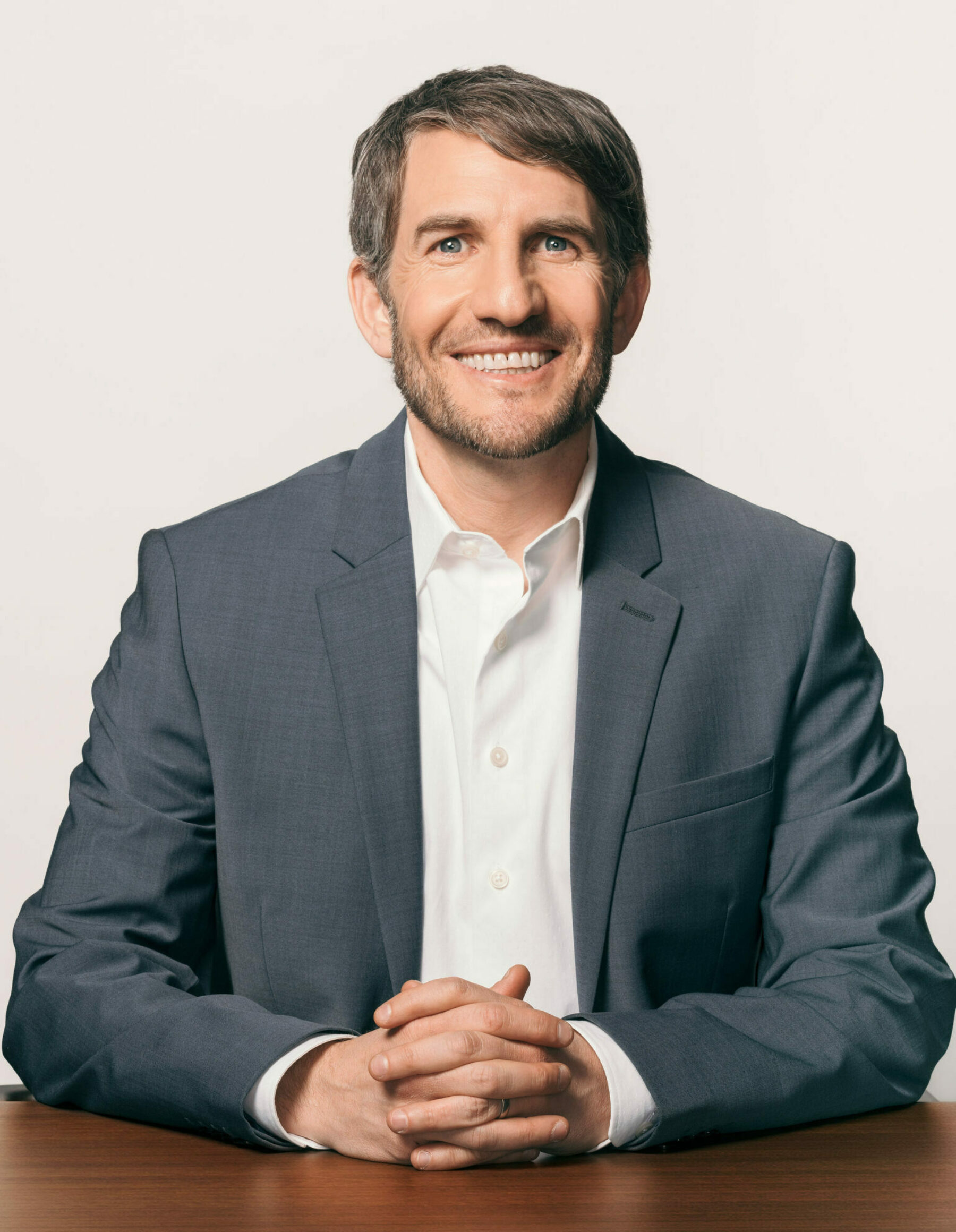Justin Milner, Arnold Ventures’ new executive vice president of evidence and evaluation, comes from a background of work in think tanks, philanthropy, and government, where he has kept his focus on the challenge of building the evidence base necessary to show that programs and policies are actually effective, and then following those findings. We sat down with Milner to talk about his new role, how to overcome political barriers, and how to deal with the stickiness of unproven policies.

Arnold Ventures
Let me start off with a big picture question: Arnold Ventures usually does work in specific fields, like health care or criminal justice. But your field, evidence-based policy, is more field-agnostic. How did you get into this space in the first place?

Justin Milner
It’s true that it can seem a little meta, but it’s a very practical field when it comes down to it. Evidence-based policy sits at the crossroads of program design, implementation, policy development, and evaluation. That, to me, is a fascinating intersection.
And your question takes me back to the roots of my career. I’ve worked in social policy from different perches my entire career, from being a kindergarten teacher, to government policy analyst, to philanthropic and nonprofit leadership. At the core of all of that work is this nagging question: Is what I’m doing making a difference? And, relatedly, how can you make sure that scarce resources in terms of your own personal time, energy and passion, and more broadly in terms of resources and dollars, are truly resulting in the positive impact that you want to see in the world?
So many of us, including myself, approach this kind of work with good intentions. But I’ve learned throughout my life, and many stops in my career, that good intentions aren’t enough by themselves to make positive change and impact for communities that scale.

Arnold Ventures
So as you came to this realization about the importance of outcomes, did you ever have an eye-opening, lighting-strike moment where the issue suddenly became clear?

Justin Milner
Early in my career, I led projects advising leaders of child welfare and juvenile justice systems on reform efforts. They would always ask: What works best to drive better outcomes? And I would consult the research clearinghouses and websites like Blueprints For Healthy Youth Development that aggregated what we knew about effective programs, and there would be almost nothing there. There were so many gaps in the evidence base of what we could confidently say worked. Rarely would we have a clear answer for local leaders about the best ways to direct their funds.
Now this was 15-plus years ago, which is an important distinction. Ten or 20 years ago there was often this sense that we lacked any real evidence for programs that could reliably improve outcomes. But that’s really started to change.

Arnold Ventures
Well, I was just about to ask you how things have changed over time in the field of evidence-based policy, and it sounds like you’re going to say that we actually have a lot more evidence now that we used to.

Justin Milner
Absolutely.
Part of this, honestly, is due to the kinds of investments that Arnold Ventures has made. And other philanthropy and government funders have also been much more intentional in funding the kinds of rigorous evaluations that give us a better sense of confidence — in a causal way — that some interventions can be impactful for the kids, families, and communities that we care about.
Fifteen years ago, the cupboard often felt empty. We still have a long way to go, but the cupboard is increasingly stocked with programs and policies that we have confidence will deliver the outcomes for the populations that we care about.

Arnold Ventures
So now that you’re at Arnold Ventures, what are the next steps?

Justin Milner
What I really want to think about is: How do we build upon that advancement?
How do we increase the take-up and drive the scaling of programs and policies for which we’ve developed a strong evidence base?
How do we support local, state and federal governments in creating the funding streams that incentivize the use of evidence-based programs?
And how can program developers and frontline organizations work to implement these programs in ways that are effective at scale?
I’m really interested in this last-mile challenge. How do you take what we know and apply the research to new contexts with new actors and new funding streams? Every state is different. Every locality is different. Every population is different. But the intersection of this growing evidence base and the art and science of implementation is an important frontier, and something I’m excited about looking at.

Arnold Ventures
I imagine there are a lot of interesting implementation challenges. You could have a policy that works well in one place because of some idiosyncratic thing that isn’t even being measured.

Justin Milner
That is in summation one of the challenges of any evaluation. And that’s one reason why Arnold Ventures and has invested so heavily in rigorous evaluations — particularly through randomized controlled trials.
But I think your point also argues for the larger approach, which is a testing and learning paradigm. The knowledge-building project that evaluation and broader social science requires is one that is iterative. We’re constantly building on what we’ve learned in the past and seeing if it continues to work in the future.
So another area I’m really excited about exploring is strengthening the advocacy agenda focused on evidence-building. I think that project can be nonpartisan, and hopefully bipartisan, and one that is truly interested in finding what is going to be most impactful.

Arnold Ventures
As someone who works at AV, this makes so much sense. And yet we still have to push for public policy to work like this. What are the barriers that prevent the public sector looking at policy through an evidence-based lens?

Justin Milner
There are several main barriers. Number one is trying to navigate the political landmines on every side of the issues. Investing in research, building evidence, and making sure that we get the greatest bang for the buck is a nonpartisan approach. But that doesn’t mean that the research won’t be subsumed in a wave of interest-driven perspectives.
We’re trying to find a seat at the table for research and evidence, but fully understand that it is not going to be at the head of the table. There will always be political interests that are going to come first, and are often going to carry the day. However, that doesn’t mean there can’t be a place within that conversation for what the research says. Ultimately policymaking has to be responsive to political constituencies. That’s natural. That’s how politics works, and that’s how policymaking works. But I do think that if we make a strong case, evidence-based policy can ideally become a constituency itself.
Second is the broader complexity of doing this type of evaluation in social policy. Oftentimes these policies and programs that we’re looking to test and evaluate are really complicated. And the policies are programs are trying to address social problems that are equally complicated. It takes a lot of forethought, a lot of planning, and a lot of intentionality to build in the kind of testing and evaluation that can help to answer these questions.
And there’s number three, the implementation challenge. It is difficult to take findings from research and figure out what to do with it, and how exactly it should inform policy program practice. That gap exists at multiple levels. A number of actors try to fill that gap and try to be supportive of that space, and it’s really challenging work.

Arnold Ventures
One of the things I’m always kind of tickled by when interacting with the evidence-based policy team is when we get reports that have basically no findings. We tested this policy, we found it didn’t have any statistically significant impact. A normal person might say: Oh, that stinks. But your team will say: Actually, we learned a lot here.

Justin Milner
If you are in this space, you have to truly buy in to the scientific method. We’re constantly trying to build upon what we think we know. And I think when you take a growth mindset, to both this work in individual spaces and the broader field, you can still get really excited and juiced up over null findings. And partially that’s because, in a generous way, you want to say: Okay, well, then something we learned about this is less effective. Let’s move on to the next thing, or let’s try to figure out why this might not have been as effective and make better going forward.
That’s not going to be everybody’s jam. For the people who develop the programs or implement the programs, political actors who have gone to bat for those programs or funded those programs, these can be really difficult findings at times. I think that speaks to the larger the importance of building a constituency for this larger project of evidence-based policy.

Arnold Ventures
My daughter was watching an episode of the Magic School Bus the other day and the lesson was that learning anything — specifically in engineering — requires failing over and over and over again. But that lesson doesn’t necessarily translate in the same way to social programs.

Justin Milner
I love that. That’s a great message for kids to be hearing early on. Here’s the thing: It makes perfect sense in an academic sense. It’s easy to think about it in a laboratory. Okay, this didn’t work, then we stopped doing this, and we test the next thing. But the reality is that this is happening in the real world. So there are real costs, transaction costs, and a stickiness to some of these policies that even if it seems like it didn’t work as well as we hoped doesn’t mean that it’s necessarily going to disappear.

Arnold Ventures
So let me shift gears for a second. Before coming to Arnold Ventures you worked at the Urban Institute and in the public sector. How do these experiences compare when it comes to thinking about evidence-based policy?

Justin Milner
I think in each of these settings you find people who are tremendously committed to social impact. Most people don’t end up working in government or nonprofits for the salary. They’re there because they want to make a difference. I’ve always admired my colleagues in both government and nonprofits — that commitment to try and improve lives of kids and families and communities in the country. Good intentions are not enough to drive better outcomes for our society, but it’s an important foundation to have that passion and the drive to do the hard work.
There’s people doing good work in constrained settings, particularly in government where you must be creative to avoid bureaucratic hurdles. Or in smaller nonprofits where you don’t always have the resources or staff to do everything perfectly, but you make up for those gaps through hustle. I think that’s a real common thread.
A major difference can be scale. When you are in government, you are truly responsible for the public good. You think at a broad level about how your work impacts society as a whole. That can often come with some limitations and layers of bureaucracy because you’re really thinking with that broad lens. Whereas in nonprofits, it can be very project driven. You work on the thing that’s in front of you, and you are trying to deliver that research project, that program, design a policy framework or do whatever as best you can. And then you set it out into the world and then you move on to the next.

Arnold Ventures
Now, there was one job I didn’t mention — you were once a kindergarten teacher. What lessons do you apply from that experience to Arnold Ventures?

Justin Milner
One lesson I carry with me is the bright promise of possibility. When I was teaching kindergarten, I felt such a privilege and responsibility to try to foster a sense of discovery and opportunity for my students’ in their first school experience. I still carry that growth mindset with me, even as I work in a totally different space.
Another takeaway from teaching kindergarten, honestly, was just that it was a lot of fun. Keeping the attention of 30-plus 5‑year-olds took a lot of energy and positive vibes. The work that we do in evidence-based policy can be really hard, it can be frustrating, it can be sometimes overwhelming. But I think it’s important to bring joy and humor and a sense of fun to the work so that we feel energized, not just about what we do in our work, but in how we do our work.














